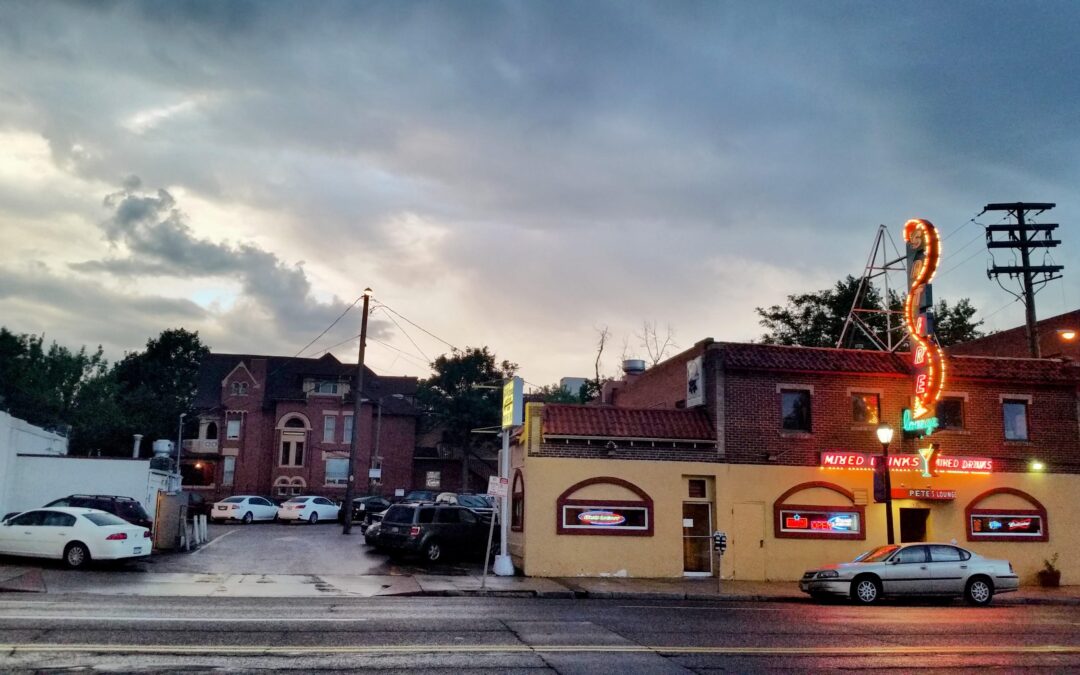Too often, parking is the reason we can’t have nice things. Just about any time the City proposes changes aimed at making our streets more walkable, bikeable, transit-friendly, or greener, concerns arise about the impacts on parking. It’s true: making more space for sidewalks, bike lanes, bus lanes, street trees or other greenery often means reducing space for on-street parking. But in many cases, the problem isn’t that parking is in scarce supply and therefore must be protected at all costs. Rather, the problem is that no one is strategically managing the available parking to ensure it’s being used as efficiently as possible, which in turn means there’s actually lots of parking that is underutilized.
The Denver Streets Partnership, with support from Sustainable Urban Planning Advisors, recently completed a study aimed at tackling this problem head on. The East Colfax Parking Management Study brought together a Steering Committee of residents, businesses, nonprofits, city leaders and agency staff to propose a coordinated approach to managing parking along the corridor, with the goals of maximizing the benefits of the forthcoming bus rapid transit (BRT) service, encouraging folks to travel the corridor without driving, and ensuring parking is available for those who truly need it. The Steering Committee’s recommendation to pilot a Parking Benefits District on East Colfax promises to serve as a model that can be replicated on other BRT corridors and in vibrant commercial areas across the city.
The plans for BRT will require the removal of approximately 300 of 970 existing on-street parking spaces along Colfax. While this has caused consternation among both businesses and residents, the study found that the ample amount of parking currently available along the corridor is vastly underutilized. Several different inventories [PDF] of parking supply and demand conducted over the last few years have found that only about 60% of on-street parking and less than 40% of off-street parking is utilized at any given time. Best practices research suggests that a utilization rate of 80% (the equivalent of about one free parking space per block) is the sweet spot that makes the most efficient use of available space while preventing drivers from circling endlessly to find a spot.
The study’s community survey [PDF] also found that most people actually prefer to park on side streets rather than on Colfax, and are willing to walk at least one block or more to their final destination on Colfax. Furthermore, the survey revealed that a majority of people (nearly 60%) would be willing to pay more for parking, if the parking revenues were reinvested in programs that support multimodal transportation along the corridor.
Drawing from this analysis and best practices from around the country, the proposed East Colfax Parking Benefits District (PBD) would strategically manage parking supply and demand by collecting a surcharge from on-street parking fees over and above the City’s standard hourly fee (currently $2) and by contracting with private property owners to publicly offer off-street supply. The PBD would then reinvest these on- and off-street parking revenues in mobility programs focused on the Colfax corridor such as EcoPasses for employees and residents, enhanced maintenance of new streetscape elements being installed as part of the BRT (like street trees), and an ambassador program aimed at providing a safe and welcoming environment for visitors to the corridor.
This approach to providing “Parking with Benefits” will broadly support the City’s ambitious transportation goals established in Denver Moves Everyone, including reducing greenhouse gas emissions, improving air quality and public health outcomes, eliminating traffic fatalities and serious injuries, and connecting people of all ages, incomes, and abilities to their daily needs. We are excited to work with our Steering Committee members to move this proposal from recommendation to reality, and stand up a new model for strategically managing parking that should serve future BRT corridors in Denver.

